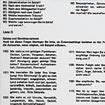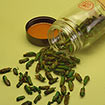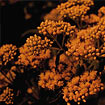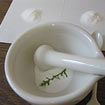Note
The texts of the exhibition were written until 2009. Since then, there have been no systematically additions. Regarding younger developements in the field of homeopathy the information given might not represent the actual state.

What is homoeopathy?
Homoeopathy (from the Greek words homoios = similar and pathos = suffering) is an independent experience-based method of treatment. It was developed in the 1790s by the physician Samuel Hahnemann (1755 – 1843) from Saxony in Germany.
Homoeopathy does not identify diseases as such, but sees disease as a disorder that affects the whole human being. Fever, pain etc are merely symptoms of this general disorder. Unlike orthodox medicine, homoeopathy does therefore not focus on a particular disease but on the whole person. A person is considered healthy as long as his or her organism is able to counterbalance any intruding pathogenic agents. Homoeopathic treatment aims at re-establishing the lost balance by using appropriate remedies.‘Classical homoeopathy’, as founded by Hahnemann, is based on three principles:
1. The principle of similarity (‘Law of Similars’) which says that a disease is to be treated with the remedy that produces similar symptoms in healthy individuals.
2. Drug proving on the healthy person to establish which symptoms a remedy can produce.
3. The drawing up of an individual disease picture based on thorough case taking (anamnesis).

The Patient’s History – Where Treatment Begins
As there is no disease as such in homoeopathy but only the ‘diseased person’, the treatment begins with in-depth case taking. It is of particular interest how the patient describes his characteristic complaints and symptoms, former illnesses and his situation in life. A physical examination can complement the conversation.
The patient’s overall symptom picture determines the choice of homoeopathic remedy. Repertories (lists of symptoms matched to particular remedies) and comprehensive pharmacopoeias (detailed descriptions of the proving symptoms of individual remedies) help to find the right medicine.
The patient’s reactions to the remedy allow conclusions about the healing process and further treatment.

The Simile Principle
The most important basis for homoeopathic treatment is the ‘Law of Similars’. According to the similarity principle, diseases can be cured with the substances that, in a healthy person, produce symptoms that correspond to those caused by the disease.
The homoeopath compares the symptoms, which were found to be characteristic for a substance in drug provings, to the symptoms displayed by the patient and chooses the remedy with the highest similarity.
Drug Proving
Apart from the patient’s history, the homoeopath needs to know the symptoms that the active agent of a remedy produces in a healthy person, that is to say the drug disease, in order to be able to apply the similarity principle.
Each remedy is described by its ‘drug picture’ which is based on the proving results and knowledge of its typical effect on the sick person.
For a drug proving a group of healthy test subjects are given a potentized homoeopathic remedy for a specified period of time. Only the person conducting the test knows which remedy it is. All symptoms observed during this period of time are registered on a daily basis. Place, time and any changes experienced by the test subjects are faithfully recorded.




Potentization
Homoeopathic remedies are specially prepared in compliance with the official Homoeopathic Pharmacopoeia (HAB).
To start with, the plant, animal or mineral raw material is liquidized (mother tincture) or pulverized (trituration). In the potentization process these substances are then mixed, step by step, by succussion or trituration: mother tinctures usually with ethanol, triturations with lactose. Certain dilution ratios have to be maintained: 1:10 = D potency; 1:100 = C potency; 1:50,000 = Q or LM potency.
For the preparation of a D2 potency one part of the first D1 potency is again mixed with 9 parts ethanol. The process is repeated until the desired potency has been obtained. One differentiates between low potencies (D1/C1 to D12/C6), medium potencies (D12/C6 to D30/C15) and high potencies (from D30/C15 up to 1000).
Homoeopathic remedies are usually prescribed in form of dilutions (drops), pilules or tablets.


